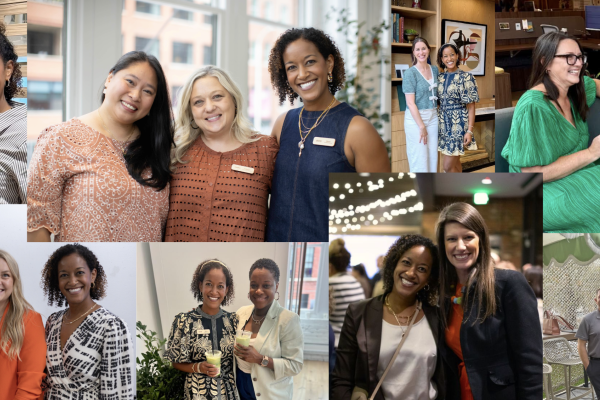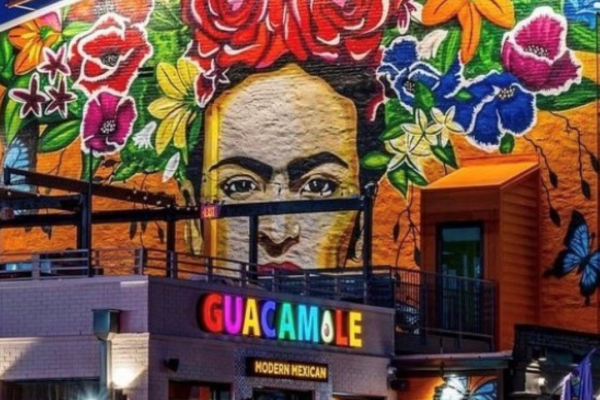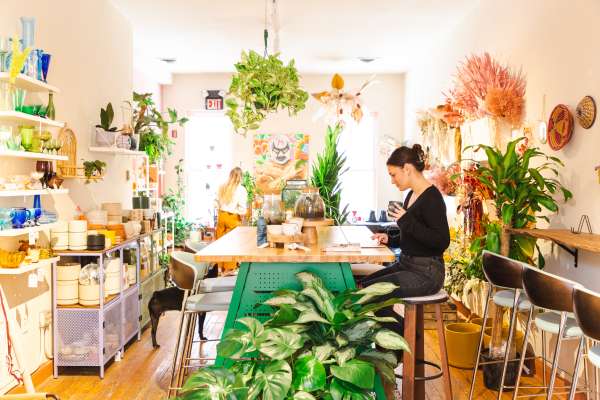The evolution of identity
Few places in the world have been talked about, romanticized, and obsessed over like New York City. Much of that attention has arisen from the city’s diverse heritage. Thousands of immigrants who entered the country through Ellis Island have left their mark. From Chinatown to Little Italy, the city’s places reflect the history of its people. The people responsible for crafting environments in this storied location aren’t just creating great work for their clients, they’re contributing to the city’s larger narrative of “place."
Angie Lee knows this well as Partner and Design Director of Interiors at FX Collaborative, an architecture, interior, and planning firm, located in downtown Manhattan.
She describes the city’s places this way: “What used to be ethnic groupings from segregation, have turned into rich destinations for people to come and learn about the culture. It's evident, in the food, in the stores and shops, and the architecture and design of the buildings. All of it blended into this incredible existence.”
Angie’s work provides her the opportunity to design spaces for diverse clients throughout the city. But her success begs the question: how do you learn to create a place in the intersection of so many cultures and stories? It’s a story that starts much earlier in Angie’s life and in a place far from the bustle of New York— Kansas
Learning to invent a sense of place
Angie was two years old when her family immigrated from Seoul to Kansas. The contrast in culture and community was stark. “For most of my childhood, we were the only Asian family in town,” she told us. But this didn’t stop Angie’s parents from bringing their native culture with them.
With no Asian grocery stores nearby, the proper ingredients for Korean cuisine were nowhere to be found. Instead of abandoning her recipes, Angie’s mother got creative. She invented new recipes with what she had available and provided an early example to Angie of using creativity to build a sense of belonging, even in an unfamiliar place.
"It was fascinating to watch her create something out of nothing. She would invent a meal that resembled a memory with ingredients she didn't understand. Observing her taught me this notion that design is always in a constant state of change," Angie said.
Growing up, Angie’s parents encouraged her to pursue medicine or music. With a surgeon for a father, and a church organist and piano teacher as a mother, either direction could have made sense. But Angie realized early on that neither was her passion.
"I didn't follow in my parent's footsteps. What I did take away from them was that they were incredibly artistic. My dad was an unbelievable illustrator and was always doodling. In truth, I think he missed his calling as an artist, and my mom was always redecorating our home. She was constantly adding art, and changing the wallpaper and furniture," Angie said.
The tenacity her parents showed in striving to create a sense of place for Angie played a significant role in her decision to pursue a degree in architecture and design. Her experience growing up in a family of immigrants, and being received by her community, would inform and strengthen her approach to the field forever.
“There were clear moments of welcoming; into the community and into people's homes, that was so special. Remembering that alchemy, and that shift in mindset when I found a sense of place, has stayed with me my entire life,” Angie said.
Using design to tell a story
Angie further developed her design approach while studying in Europe. It was an experience that would present to her, the power of storytelling.
"I was near Paris, wandering around the city and ancient streets that embraced everything you could think of. The buildings were knit together with the city fabric, and the paving all had different textures. It was here that I noticed a kind of sequence to space, where it felt like a cinematic experience that kept revealing itself layer by layer," Angie said.
Through her work at FX, she has the opportunity to translate that same sense of history and narrative into environments—creating places that connect to New York’s larger story.
"I have a similar feeling today when I walk around New York. There is an opera of sensory bombardment taking place all around me, serving as a constant reminder of how much I don't actually know yet. As much as I feel like my experiences have taught me to understand what people want or need, this city always reminds me that there is still an infinite number of stories to unpack," Angie said.
For Angie, the design process is more than just choosing materials or creating sketches. She feels it is her responsibility to use her work as a voice to tell those hidden stories, and weave together an experience that makes people’s lives better.
“It's not just about pretty fabrics. It's about creating an experience that is going to make people's lives better.”
“There is this artist, Theaster Gates, and he said something once that stuck with me. He spoke about beauty being essential. What he meant was, design can create a shift, in material or place, from being in need of attention to being something better, and therefore beautiful," Angie said.
Carrying on a tradition of place-making
As immigrants, Angie witnessed her parents work relentlessly to provide a good life for her, and attributes much of her success to their work ethic.
"Watching them through the years helped me sustain my psychology through many late nights of studying and especially at the beginning of my career. When I was often, not just the only woman in the room, but also the only person of color," Angie said.
Today, she rarely finds herself to be the only person of color in the room, and certainly not the only woman.
"All the things my parents were fighting for, was training me to be strong enough for what has now come to fruition. For that, I can't thank them enough," Angie said.
At work, Angie is deliberate about encouraging people to speak up and to create an environment that makes it safe for them to tell their stories. Voices previously unheard are now the center of current conversations.
"With the younger generations coming into the workforce, they’re expecting and demanding a level of balance in equity and lifestyle and inclusion that’s extraordinary. I couldn't be more excited about it."
But Angie’s desire to pass on the values she’s learned from her family and work goes beyond the office—it also shapes her approach to parenting. For Angie, the transition from being a design leader to a mother of two at home came with its challenges.
"To be completely honest, I have not done it elegantly. Keeping all aspects of my life in order has always been a bit choppy, but I think having a tiger mom growing up helped me develop useful muscles, so I could be strong and take on a lot at work and home all at once," Angie said.
Angie's husband, Eugene Kim, runs his own Architecture and Interior Design company. He still, however, finds time to cook dinner for the family every night—a simple task that contributes immensely to Angie’s ability to excel at work.
“I can't do any of this without my husband. He has come along this journey and we are both re-educating ourselves on how to take on parenthood. I had this revelation after our second came along, that so much of what I have learned about parenting has been from the help of others. And a lot of really smart women,” Angie said.
“My kids are watching me. It's interesting and it's wonderful that they enjoy seeing me work. They know when they are grown and are working themselves, there is definitely more than one model to follow.”
As Angie navigates the complexity of parenthood and leadership in NYC, her design ethic and approach to the world are still grounded in the experiences that shaped her back in Kansas.
“My dad still calls me a country bumpkin, because I could never have imagined myself living in a place like NYC, much less raising a family here. But this city and my family are what continues to drive me. They are what drives all that I am trying to achieve.”
People and places do not define us, but they do play a role in shaping who we are, and in Angie’s case, the environments she creates. While she may not be able to draw a direct link to what inspires her work, she describes it best as a feeling. Like moments of welcoming, when a place becomes a home.




















